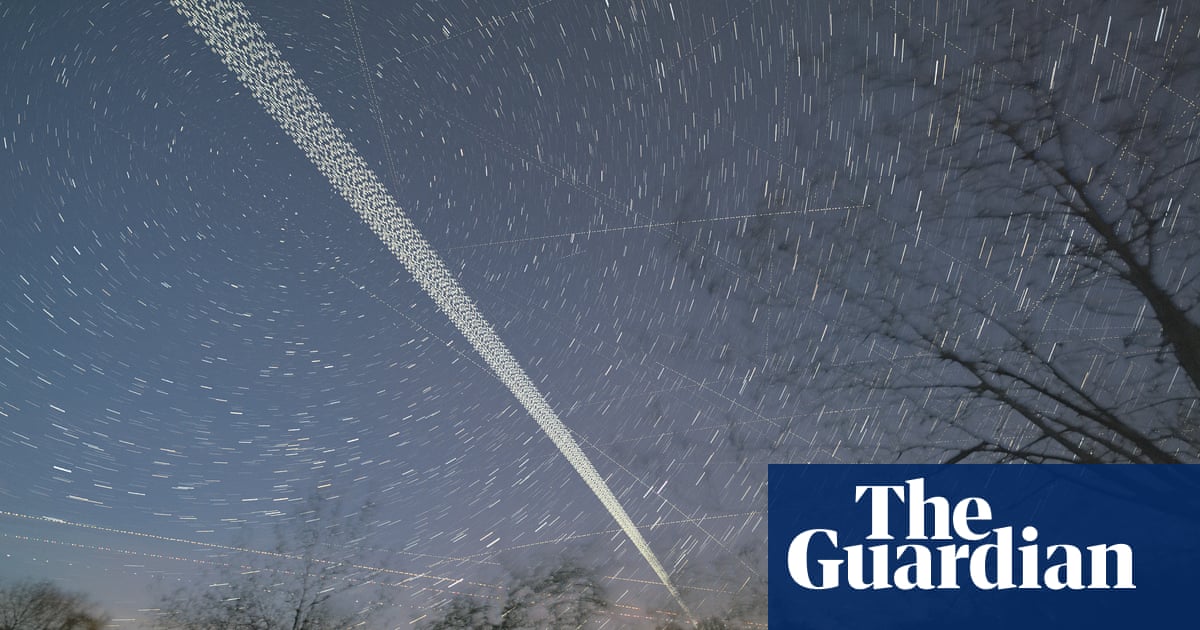
Artificial satellites and space junk orbiting the Earth can increase the brightness of the night sky, researchers have found, with experts warning such light pollution could hinder astronomers’ ability to make observations of our universe.
There are more than 9,200 tonnes of space objects in orbit around the Earth, ranging from defunct satellites to tiny fragments, according to the European Space Agency (ESA). Now it seems space junk not only poses a collision risk but, together with other space objects, is contributing to light pollution.
Writing in the Monthly Notices of the Royal Astronomical Society, researchers describe how sunlight that is reflected and scattered from space objects can appear as streaks in observations made by ground-based telescopes.
“Because the streaks are often comparable to or brighter than objects of astrophysical interest, their presence tends to compromise astronomical data and poses the threat of irretrievable loss of information,” the team writes.
But for some instruments, the impact could be greater still. “When imaged with high angular resolution and high sensitivity detectors, many of these objects appear as individual streaks in science images,” they write. “However, when observed with relatively low-sensitivity detectors like the unaided human eye, or with low-angular-resolution photometers, their combined effect is that of a diffuse night sky brightness component, much like the unresolved integrated starlight background of the Milky Way.”
Calculations in the report suggest this glow could reach up to 10% of the natural night sky brightness – a level of light pollution previously set by the International Astronomical Union (IAU) as being the limit that is acceptable at astronomical observatory sites.
While the researchers say the idea of a “natural level” of brightness has its own difficulties, they stress further research is necessary, adding that the situation could become worse as further satellites, including “mega-constellations”, are launched.
Greg Brown, a Royal Observatory astronomer who was not involved in the study, said light pollution was a big problem for astronomers.
“Telescopes like the soon-to-be-operational Vera C Rubin Observatory are expecting vast contamination of their images from just the mega-constellations expected in the next few years, which will be difficult and costly to compensate for and do seriously risk scientists missing out on key scientific discoveries,” he said.
While Brown said it was unclear whether the assumptions made in the study held true, given changes in satellite design and the difficulty of estimating small space debris, he said astronomical observations would be increasingly affected by such light pollution.
“This is definitely the time to be concerned about the future of both professional and amateur astronomy,” he said.
Prof Danny Steeghs of the University of Warwick said there was a balance to be struck between the benefits of satellites and their impact on our ability to study the night sky, but agreed light pollution was likely to be a growing, and escalating, problem.
“We can, as astronomers, remove or reduce the direct impact on our data somewhat by employing image processing techniques, but of course it would be a lot better if they are not there for starters,” he said.
Fabio Falchi, from the Light Pollution Science and Technology Institute in Italy, said the problem was global. “The distribution of the space debris is fairly uniform around our planet, so the contamination is already present everywhere,” he said, suggesting those responsible for the problem should help to solve it.
“Maybe Elon Musk can put his engineers at work to find out a solution, at least to counterbalance a little the damage that his Starlink mega-constellation of satellites is going to make to the starry sky,” he said.
While projects have recently begun to clean up space junk, Steeghs said one difficulty was that small fragments could be tricky to sweep up yet could nonetheless contribute to the light pollution.
Chris Lintott, a professor of astrophysics at the University of Oxford, also stressed the need for action. “It does seem that simple efforts – like building satellites out of darker materials – might be very helpful, and I hope operators will take such steps as soon as possible,” he said.











